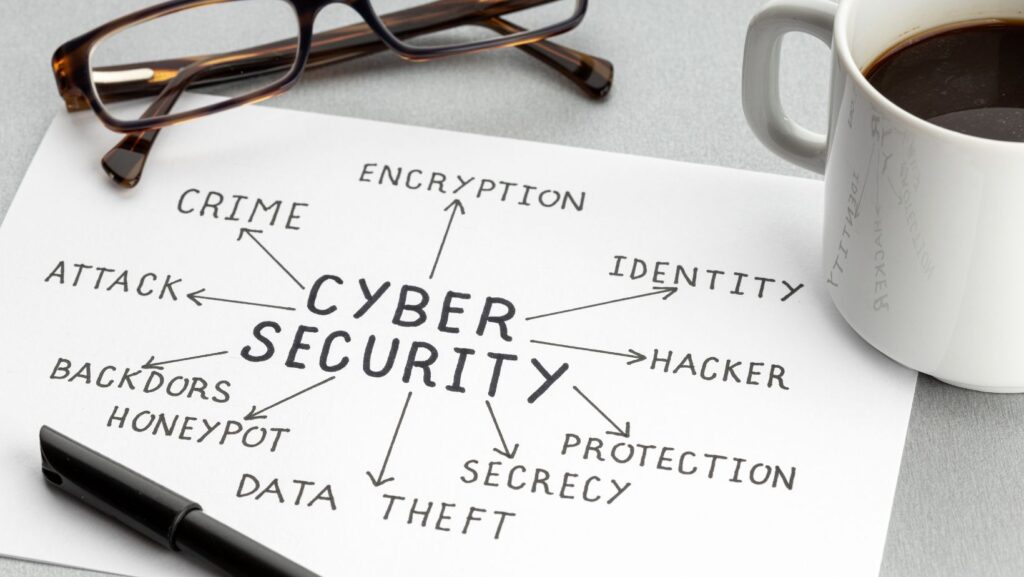Cybersecurity has become a critical concern for organizations across all industries, but it’s especially important for public sector organizations. With the increasing sophistication of cyber threats and the growing volume of sensitive data handled by these entities, the need for strong cybersecurity strategies has never been more urgent. Public sector organizations must protect everything from personal information to government data, all while ensuring the continuity of essential services. In this article, we will explore how public sector organizations can build a robust cybersecurity strategy to stay ahead of potential threats and safeguard their digital infrastructure.
Understanding the Importance of Cybersecurity in the Public Sector
Public sector organizations are increasingly becoming prime targets for cybercriminals. Government agencies, healthcare providers, law enforcement, and educational institutions manage large volumes of sensitive data, which makes them highly attractive targets for hackers. The consequences of a successful cyber attack can be severe—ranging from the theft of personal information to the disruption of essential public services.
Such attacks don’t just have financial consequences; they can also erode public trust in these institutions. The importance of cybersecurity in the public sector is, therefore, paramount. It is crucial for safeguarding citizens’ data, maintaining the integrity of public services, and protecting critical infrastructure. Without a robust cybersecurity strategy, these organizations expose themselves to risks that could significantly disrupt their operations and harm their reputations.
To effectively address these challenges, public sector cybersecurity must be a top priority. A solid strategy is key to identifying potential vulnerabilities and ensuring that security measures are in place to protect both public data and the infrastructure that supports essential services.
Key Elements of a Strong Cybersecurity Strategy
Building a robust cybersecurity strategy for public sector organizations involves more than just installing firewalls and antivirus software. It requires a comprehensive, layered approach that addresses a variety of potential risks and vulnerabilities. Public sector cybersecurity demands a holistic strategy that aligns with the unique operational needs and security challenges faced by these organizations. Below, we will break down the key elements that should be included in any effective cybersecurity strategy.
1. Risk Assessment and Threat Modeling
The first step in building a cybersecurity strategy is to conduct a thorough risk assessment. This process involves identifying the potential risks and vulnerabilities within the organization’s network, systems, and operations. Public sector organizations need to understand the specific threats they face, whether it’s cybercriminals, state-sponsored hackers, or insiders with malicious intent.
By conducting a risk assessment, public sector organizations can prioritize their efforts and resources toward addressing the most significant risks first. This can help ensure that limited cybersecurity resources are allocated efficiently and that the organization’s cybersecurity posture is as strong as possible.
2. Incident Response and Disaster Recovery Plans
A strong cybersecurity strategy must include a detailed incident response plan. Despite all efforts to prevent cyber attacks, it’s likely that some incidents will still occur. Having a well-defined response plan in place ensures that the organization can act quickly to contain the attack, minimize damage, and recover its systems and data.
In addition to an incident response plan, public sector organizations should also develop a disaster recovery plan. This plan should outline the steps needed to restore critical systems and services in the event of a cyber-attack or other disaster. The recovery process must be as fast and efficient as possible to minimize downtime and prevent disruptions to public services.
3. Employee Training and Awareness
One of the most common entry points for cyber attackers is human error. Phishing emails, weak passwords, and a lack of awareness about security risks can all make it easier for hackers to breach an organization’s systems. For this reason, it’s essential for public sector organizations to provide ongoing cybersecurity training for all employees.

Employee training should cover topics such as recognizing phishing emails, using strong passwords, and understanding the importance of regular software updates. Public sector organizations should also create a culture of cybersecurity awareness, encouraging staff to report suspicious activity and follow best practices for data protection.
4. Data Encryption and Access Control
Data encryption is one of the most effective ways to protect sensitive information. Encrypting data ensures that even if it is intercepted or accessed by unauthorized individuals, it remains unreadable and useless. Public sector organizations should use encryption for all sensitive data, both in transit and at rest.
In addition to encryption, organizations should implement strict access control measures. This means ensuring that only authorized personnel have access to sensitive information and systems. Role-based access control (RBAC) and the principle of least privilege are effective strategies for limiting access to critical systems and data.
5. Regular Security Audits and Vulnerability Testing
Cyber threats are constantly evolving, and so should an organization’s cybersecurity strategy. Public sector organizations should regularly conduct security audits and vulnerability testing to identify potential weaknesses in their systems. This proactive approach helps organizations stay ahead of emerging threats and ensures that their defenses remain strong.
Penetration testing, vulnerability scanning, and other security assessments can help identify gaps in the cybersecurity strategy before attackers can exploit them. Regularly updating systems and software is also essential for patching known vulnerabilities and ensuring that defenses remain up to date.
Public Sector Cybersecurity Challenges
While the principles of cybersecurity are generally the same across industries, public sector cybersecurity presents unique challenges that can complicate the development and implementation of effective strategies. These challenges include:
1. Budget Constraints
Public sector organizations often operate under tight budgets, making it difficult to invest in advanced cybersecurity solutions and staffing. However, cybersecurity is a long-term investment, and the consequences of a successful cyber attack can be far more costly than the expense of implementing a strong defense.
2. Legacy Systems
Many public sector organizations rely on legacy systems that were not designed with modern cybersecurity threats in mind. These systems can be difficult and expensive to update, leaving them vulnerable to attack. Migrating to more secure, modern systems is a time-consuming process, but it’s essential for improving cybersecurity in the long term.
3. Complex Regulatory and Compliance Requirements
Public sector organizations must adhere to strict regulatory and compliance requirements related to data privacy, security, and reporting. These regulations can vary by region and sector, adding an additional layer of complexity to the development of a cybersecurity strategy. Staying compliant while addressing cybersecurity needs requires careful planning and coordination.
4. Coordination Across Multiple Agencies
Public sector organizations often operate in silos, with different agencies or departments handling different aspects of operations. Ensuring effective communication and coordination between these entities is crucial for building a unified cybersecurity strategy. Cybersecurity efforts must be integrated across the entire organization to ensure that every part of the system is adequately protected.
Building a Culture of Cybersecurity Awareness
One of the most important factors in building a robust cybersecurity strategy for public sector organizations is fostering a culture of cybersecurity awareness. Cybersecurity is not just the responsibility of the IT department—every employee has a role to play in protecting the organization’s digital infrastructure.

Public sector organizations should promote a security-first mindset at every level. This includes regular training and awareness campaigns, as well as encouraging employees to report suspicious activity and follow security protocols. When everyone in the organization understands the importance of cybersecurity and their role in protecting sensitive data, it creates a stronger defense against potential threats.
The Role of Technology in Strengthening Public Sector Cybersecurity
Technology plays a critical role in building and maintaining a strong cybersecurity strategy. Public sector organizations should leverage advanced cybersecurity tools and technologies to strengthen their defenses. Some of the technologies that can help improve public sector cybersecurity include:
- Firewalls and Intrusion Detection Systems (IDS): These systems monitor network traffic and identify potential threats before they can cause damage.
- Endpoint Protection: Ensures that all devices connected to the network are secure and protected from malware and other threats.
- Artificial Intelligence (AI) and Machine Learning (ML): These technologies can help detect and respond to cyber threats in real-time, improving the organization’s ability to defend against evolving threats.
By integrating these technologies into their cybersecurity strategy, public sector organizations can improve their ability to detect, prevent, and respond to cyber threats.
Conclusion
Building a robust cybersecurity strategy is essential for public sector organizations to protect sensitive data, maintain the integrity of public services, and prevent disruptions to critical infrastructure. By conducting thorough risk assessments, implementing strong incident response and recovery plans, training employees, and utilizing advanced cybersecurity technologies, public sector organizations can stay one step ahead of cybercriminals.
Public sector cybersecurity is an ongoing effort that requires constant vigilance, adaptation, and investment. The digital landscape is constantly evolving, and organizations must remain proactive in identifying and addressing potential threats. A strong cybersecurity strategy not only protects an organization’s data and systems but also ensures the continued trust and safety of the public.




